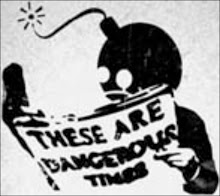Although the spin is hard to detect for the average reader,
New York Times reportage of Middle East affairs is perniciously biased. In their seminal book,
Israel-Palestine on Record: How the New York Times Misreports Conflict in the Middle East, Princeton professor Richard Falk and media critic Howard Friel argue that “the
Times regularly ignores or under-reports a multitude of critical legal issues pertaining to Israel’s policies, including Israel’s expropriation and settlement of Palestinian land, the two-tier system of laws based on national origin evocative of South Africa’s apartheid regime, the demolition of Palestinian homes, and use of deadly force against Palestinians.” In other words, what is not said by the
New York Times may be even more important than what is said.
In June of 2010, a year and a half after the Israeli military launched what a United Nations investigation described as “a deliberately disproportionate attack designed to punish, humiliate and terrorize a civilian population,” the
New York Times sent a photographer into Gaza to capture a slice of daily life. Ethan Bronner, the
Times Jerusalem bureau chief, wrote the narrative for the photo essay entitled “Gaza, Through Fresh Eyes,” in which he gushes about “jazzy cellphone stores and pricey restaurants … endless beaches with children whooping it up … the staggering quality of the very ordinary.” Seemingly lifted from an apolitical travel magazine, Bronner’s article merely alludes to families who have been “traumatized,” and omits any mention of the UN allegations of recently committed Israeli war crimes and human rights violations. Other than an oblique reference to “destroyed buildings” and “rubble,” Bronner’s travelogue also elides the vast civilian infrastructure Israel destroyed during the onslaught, including chicken farms, a flour mill, a sewage treatment plant, a UN school, vast tracts of civilian housing, government buildings, a prison, police stations, TV stations, newspapers ... and between 600 and 700 factories, workshops and businesses. The impression left by Bronner? Gaza is an OK place; nothing remarkable to see there, least of all evidence of Israeli war crimes; move along, move along.
And yet, what is not disclosed is that Ethan Bronner is married to an Israeli citizen and has a son who is enlisted in the Israeli army. When news of these familial connections broke,
Times public editor Clark Hoyt wrote an op-ed recommending that Bronner be reassigned to avoid any potential for bias. Executive editor Bill Keller refused, waiving the
Times’s normally strict conflict of interest standards.
Times reporter Isabel Kershner is similarly compromised by elisions and distortions. When Kershner reported on Palestinian refugees in Syria who, in June 2011, nonviolently marched into the Golan Heights to protest, she failed to mention that the Golan Heights is Syrian territory illegally occupied by Israel. No government in the world recognizes the Golan Heights as legitimately part of the state of Israel. Kershner also omits the fact that the Palestinian refugees’ right of return to their homes is enshrined in UN resolutions and that Israel has consistently violated international law in preventing the refugees from returning to their homes. Let us also not forget that at this nonviolent protest the Israeli army killed 22 Palestinian and Syrian protesters. In addressing the apparently overwhelming violence against unarmed protesters, Kershner reports: “Israeli officials say they tried every nonlethal method of crowd control at their disposal” before they opened fire “at the feet of the protesters,” implying that the killings were unintentional, and unavoidable, and defied the laws of physics. Kershner quotes none of the protesters as to what they saw. If she had, she may have heard what activist and eyewitness Salman Fakhreddin told independent journalist Jillian Kestler-D’Amours: “Israel decided to kill people in order to frighten them because Israel is afraid of the delegitimization of the state of Israel and Israeli policy in the international community.” By now it may not be a surprise to learn that Kershner is an Israeli citizen who is married to an Israeli citizen and who spent “a couple decades in Israeli journalism and Jewish education” before joining the American paper in 2007.
In large part because of Ethan Bronner and Isabel Kershner’s ahistorical, context-free, reporting-in-a-vacuum, the
New York Times is to blame for what
Adbusters has previously called “the United States of Amnesia.” American citizens are left unaware of Israel’s current and historical violations of international law and are thus unable to question their government’s multibillion dollar military giveaways to Israel, a state that just happens to be these two reporters’ adopted home.
Matthew A. Taylor @
'Adbusters'








